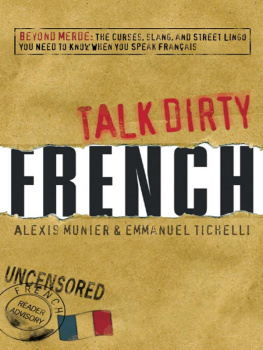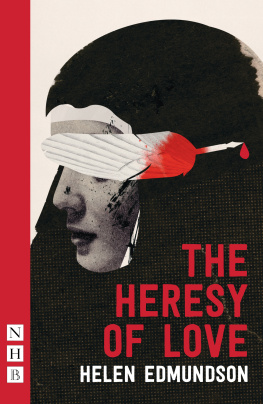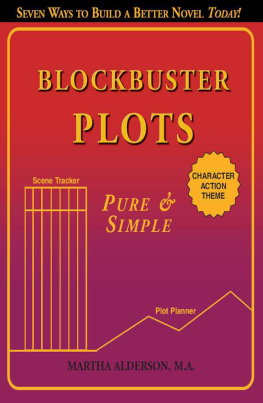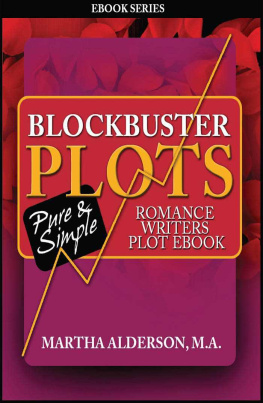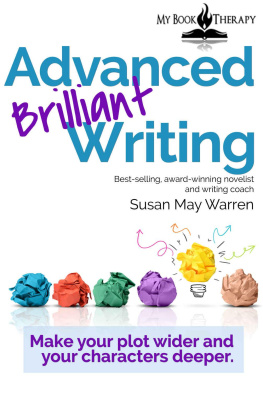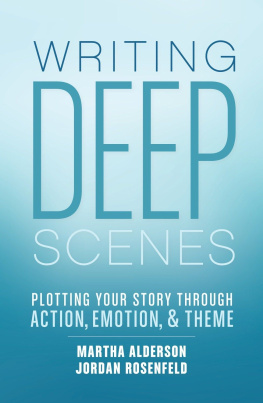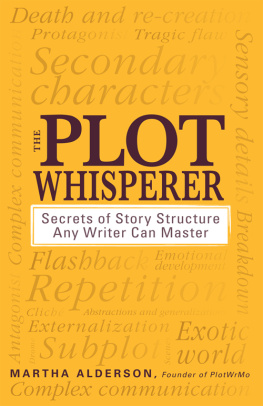PLOT
PERFECT
HOW TO BUILD UNFORGETTABLE STORIES SCENE BY SCENE
PAULA MUNIER

WritersDigest. com
Cincinnati, Ohio
DEDICATION
For my dear Scribe Tribe,
and plotters everywhere.
TABLE OF CONTENTS
INTRODUCTION
This is narrative: The king died, and then the queen died.
This is plot: The king diedand then the queen died of grief.
This definition of plot comes from the great E.M. Forster, author of A Passage to India, Room with a View, Howards End, and many other wonderful novels whose plots were as rich in theme as they were in twists and turns. The way he wove theme through his stories gave his work a dimension and depth that earned him a place on bestseller lists, in the ranks of English literature, andmost importantin readers hearts.
Just like Forster, you want your stories to be page-turners with dimension and depth that earn a place in the world of literature and in readers hearts. As a writer, I know how hard it can be to create great thematic storylines. But as an editor and a writing teacher, I also know that you can learn to create compelling plots with themes that resonate with readers. And as an agent, I know that what makes the difference between a sale and no sale is often theme.
In a time when more and more stories read like video games, theme is often given short shriftif its given any thought at all. Now, as in Forsters time, the most successful stories are the ones with multilayered plots rich in theme, character, and nuance. These are the stories that stand outand find a devoted readership. In this book, youll learn how to devise such a compelling plot.
Ive based my system on the one I developed for my online course for Writers Digest, the Plot Perfect Boot Camp. Its a plotting system that anyone can use to create a story structure that worksno matter what your genre. Whether youre writing a novel, short story, memoir, stage play, or screenplay, youll learn the strategies you need to build your own scene-by-scene blueprint in record time, including how to:
- identify the central theme that drives your plot
- devise powerful master plots and subplots based on theme and variations on theme
- build strong character arcs for your main characters
- develop engaging secondary characters to drive your subplots
- brainstorm scenes to bring your theme-driven plot to life
- supercharge your scenes with thematic reversals
- create a scene list for maximum impact
- use dialogue, setting, tone, and voice to enhance your plot
- learn tips and tricks to speed up your pacing
I designed Plot Perfect as an interactive plotting primer, with templates you can use to help you identify your themes and variations on themes, structure your plot and subplots, and build out your plot scene by scene. Please take the time to complete the templates and do the exercises. They are the tools you need to create the kind of story guaranteed to keep readers turning the pages. And dont forget to reward yourself with the fun activities sprinkled throughout the book. These edutainment breaks are designed to be fun, sure, but they will also give your writers brain a creativity boost. Finally, youll find suggested reading lists in every chapter; these are books that have proven invaluable to me and remain on my bookshelf today, ready to inspire me again, as I hope they might inspire you.
Lets get started.
PART I
WHAT IS PLOT?
Throughout the ages, stories with certain basic themes have recurred over and over, in widely disparate cultures; emerging like the goddess Venus from the sea of our unconscious.
Joan D. Vinge
CHAPTER ONE
THE POWER OF THEME
Get your character in trouble in the first sentence and out of trouble in the last sentence.
Barthe DeClements
THE THEMES THE THING!
Whether were talking about A Passage to India or Gone Girl, The Perks of Being a Wallflower or Unbroken, a great story embodies a great theme. Every work has a theme; in other words, what the story is really about, and what the writer is trying to say in writing it. (Thats why scholars can spend hundreds of years debating a writers themes!)
Theme-driven plots are the ones that resonate most with readersbecause they strike close to home. Themes run the gamut of human emotion and experience, and are as numerous as the stories they appear in. Here are just a few.
- love
- power
- sex
- loyalty
- truth
- revenge
- family
- courage
- resiliency
- sacrifice
- greed
- friendship
- self-actualization
- coming of age
- mans relationship to God
- mans relationship to nature
- mans relationship to technology
- and many more!
In this chapter, youll learn how to recognize the themes in your work and create theme statements that (1) resonate with readers and (2) are unique enough to stand out in a tough marketplace. Youll use your theme statements to create plots that are fresh and meaningful as well as clever and commercial.
All stories interest me, and some haunt me until I end up writing them. Certain themes keep coming up: justice, loyalty, violence, death, political and social issues, freedom.
Isabel Allende
FIND YOUR THEME
Theme is not nearly as complicated as you may have been led to believe in your high school or college English classes. Theme is simply what your story is really all about.
Is it a love story (One Day)?
Or a story about revenge (Death Wish)?
Or a story about love and revenge (Wuthering Heights)?
If youre not sure, ask yourself what motivates your protagonist. Is it jealousy or magnanimity? Greed or generosity? The search for truth or a desire to see justice done?
If youre not sure what your themes are, look to other stories in your genre for hints. If its a romance, your themes will be related to romancetrue love, soul mates, broken hearts. If youre writing erotica, the themes will revolve around the nature of lust, domination, submission, and so on. Crime stories explore the nature of good and evil; science fiction often examines mans relationship to technology. Examine the themes of your favorite stories in the genre in which youre writing, and youll often find that those same themes can be applied to your storyor can at least suggest related themes that may be a better fit or that fuel your brainstorming efforts.
THEME BY TITLE
Sometimes the themes are right there in the title.
- Wicked by Gregory Maguire
- Eat Pray Love by Elizabeth Gilbert
- Pride and Prejudice by Jane Austen
- War and Peace by Leo Tolstoy
- Fear of Flying by Erica Jong
- Heart of Darkness by Joseph Conrad
The Thematic Power of Proverbs
Themes in stories are, in effect, the themes of our lives. Thats why proverbs, sayings, and common phrases often embody theme.
These adages also provide a point of viewthat is, they say something about the theme that reveals a particular attitude about that theme. You can use these various points of view to good advantage in your plotting.
Here are some common proverbs that speak to theme.
- Beauty is in the eye of the beholder.
- Honesty is the best policy.
- Two wrongs dont make a right.


